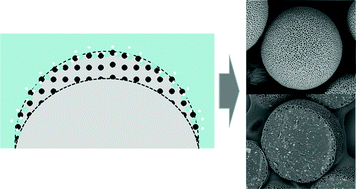Superficially porous poly(lactic-co-glycolic acid)/calcium carbonate microsphere developed by spontaneous pore-forming method for bone repair†
Abstract
Biodegradable

* Corresponding authors
a
School of Materials Science and Engineering, South China University of Technology, Guangzhou, P. R. China
E-mail:
imwangyj@163.com, caoxd@scut.edu.cn
Fax: +86-020-22236088
Tel: +86-020-87112160
b National Engineering Research Center for Tissue Restoration and Reconstruction, Guangzhou, P. R. China
c Guangdong Province Key Laboratory of Biomedical Engineering, South China University of Technology, Guangzhou, P. R. China
Biodegradable

 Please wait while we load your content...
Something went wrong. Try again?
Please wait while we load your content...
Something went wrong. Try again?
D. Cheng, X. Cao, H. Gao and Y. Wang, RSC Adv., 2013, 3, 6871 DOI: 10.1039/C3RA00148B
To request permission to reproduce material from this article, please go to the Copyright Clearance Center request page.
If you are an author contributing to an RSC publication, you do not need to request permission provided correct acknowledgement is given.
If you are the author of this article, you do not need to request permission to reproduce figures and diagrams provided correct acknowledgement is given. If you want to reproduce the whole article in a third-party publication (excluding your thesis/dissertation for which permission is not required) please go to the Copyright Clearance Center request page.
Read more about how to correctly acknowledge RSC content.
 Fetching data from CrossRef.
Fetching data from CrossRef.
This may take some time to load.
Loading related content
